Stability Analysis of Cavern Collapse in Fractured-Cavity Oil Reservoirs
Abstract
:1. Introduction
2. Physical Model Test
2.1. Project Background
2.2. The Principles of Similitude
2.3. Development of Similar Material
2.4. Model Test Plan
2.5. Layout of the Monitoring Sensor
2.6. Construction of the Geomechanical Model
3. Model Test Results
3.1. Variation in the Displacement
3.2. Variation Features of the Stress
3.3. Failure Modes
3.4. Conclusion of Model Test Research
4. Numerical Simulation
4.1. Setup of the Numerical Model
4.2. Verification of Simulation Results
4.3. Analysis of Numerical Simulation Results
5. Discussion
6. Conclusions
Author Contributions
Funding
Institutional Review Board Statement
Informed Consent Statement
Data Availability Statement
Acknowledgments
Conflicts of Interest
References
- Kang, Z.; Li, J.; Zhang, D. Percolation characteristics of fractured-vuggy carbonate reservoir in Tahe oilfield. Oil Gas Geol. 2005, 26, 634–640. [Google Scholar]
- Jiang, H.Y.; Song, X.M.; Wang, Y.J. Current situation and forecast of the world’s carbonate oil and gas exploration and development. Offshore Oil 2008, 28, 6–13. [Google Scholar]
- Xia, R.Y.; Tang, J.S.; Zou, S.Z. Research on paleokarst in carbonate oil and gas fields and its application in oil and gas exploration and development. Acta Geosci. Sin. 2006, 5, 503–509. [Google Scholar]
- Zhang, S.C.; Liang, D.G.; Zhu, Y.G. Geological Basis for Formation of Marine Oil and Gas Fields in China. Chin. Sci. Bull. 2007, S1, 19–31. [Google Scholar]
- Kang, Y.Z. Characteristics and distribution laws of paleokarst hydrocarbon reservoirs in palaeozoic carbonate formations in China. Nat. Gas Ind. 2008, 28, 1–12. [Google Scholar]
- Li, Y.; Hou, J.G.; Li, Y.Q. Characteristics and classification and classification of carbonate fracture-cavity reservoirs. Pet. Explor. Dev. 2016, 43, 600–606. [Google Scholar] [CrossRef]
- Li, Y. The theory and method for development of carbonate fractured-cavity reservoirs in Tahe oilfield. Acta Pet. Sin. 2013, 33, 115–121. [Google Scholar]
- Jiao, F.Z. Volume development practice and understanding of deep carbonate fracture-cavity reservoirs in Tarim Basin. Pet. Explor. Dev. 2019, 46, 552–558. [Google Scholar] [CrossRef]
- Loucks, R.G.; Mescher, P.K.; McMechan, G.A. Three-dimensional architecture of a coalesced, collapsed-paleocave system in the Lower Ordovician Ellenburger Group, central Texas. AAPG Bull. 2003, 88, 535–556. [Google Scholar] [CrossRef]
- Zhu, W.; Baud, P.; Wong, T.-F. Micromechanics of cataclastic pore collapse in limestone. J. Geophys. Res. Atmos. 2010, 115. [Google Scholar] [CrossRef]
- Tang, P.; Wu, S.-Q.; Yu, B.-S.; Qian, Y.-X.; Peng, S.-T. Genesis Characteristics and Research Means of Paleokarst Collapse. Geoscience 2015, 29, 675–683. [Google Scholar]
- Aadnoy, B.S. Effects of reservoir depletion on borehole stability. J. Pet. Sci. Eng. 1991, 6, 57–61. [Google Scholar] [CrossRef]
- Chen, Z.H.; Dai, Y.; Lang, Z.X. Storage-percolation modes and production performance of the karst reservoirs in Tahe Oilfield. Pet. Explor. Dev. 2005, 3, 101–105. [Google Scholar]
- Chen, Z. Finite element modelling of viscosity-dominated hydraulic fractures. J. Pet. Sci. Eng. 2012, 88, 136–144. [Google Scholar] [CrossRef]
- Wang, Y.J.; Zhang, Z.N.; Mou, J.Y.; Zhao, B.; Liu, Z.Y. Impact of cavity on hydraulic fracture in fracture-cavity carbonate reservoir. Chin. J. Undergr. Space Eng. 2019, 15, 175–181. [Google Scholar]
- Yang, J. Study of Numerical Simulation Theory and Method of Fracture-Vug Unit in Fracture-Vuggy Carbonate Reservoirs; China University of Petroleum: Qingdao, China, 2007. [Google Scholar]
- Liu, B.H.; Jin, Y.; Chen, M. Influence of vugs in fractured-vuggy carbonate reservoirs on hydraulic fracture propagation based on laboratory experiments. J. Struct. Geol. 2019, 124, 143–150. [Google Scholar] [CrossRef]
- Ma, H. Using logging methods to identify and evaluate karst caves in Tahe Oilfield. Fault Block Oil Gas Field 2012, 19, 266–269. [Google Scholar]
- Yang, X.L. Seismic facies identification and cave filling technology based on forward modeling—Taking East Ordovician reservoirs in Block 12 of Tahe Oilfield as an example. Complex Oil Gas Reserv. 2019, 12, 17–21. [Google Scholar]
- Niu, Y.J. Study on the Structural and Characteristics of Karst Collapse in Fractured & Cave Carbonate Reservoir; China University of Geosciences: Wuhan, China, 2012. [Google Scholar]
- Zheng, X.P.; Shen, A.J.; Shou, J.F.; Pan, W.Q. A Quantitative Plate of Collapsed Karst Cave Depth and Its Application in Geological Prediction and Evaluation of Carbonate Reservoir. Mar. Orig. Pet. Geol. 2009, 4, 55–59. [Google Scholar]
- Rong, Y.M. Study on the Characteristics of Middle-Lower Ordovician Carbonate Reservoir Paleocave Collapsed System in Tahe Oilfield; China University of Geosciences: Wuhan, China, 2013. [Google Scholar]
- Qian, Y.X.; Taberner, C.X.; Zou, S.L.; You, D.H.; Wang, R.Y. Diagenesis Comparison between Epigenic Karstification and Burial Dissolution in Carbonate Reservoirs: An Instance of Ordovician Carbonate Reservoirs in Tabei and Tazhong Regions, Tarim Basin. Mar. Orig. Pet. Geol. 2007, 2, 3. [Google Scholar]
- Zhang, B.M.; Liu, J.J. Classification and characteristics of karst reservoirs in China and related theories. Pet. Explor. Dev. 2009, 36, 12–29. [Google Scholar]
- Zhang, Q.Y.; Xiang, W.; Zhang, Y.; Wang, C.; Liu, C.C. Development and application of ultra high pressure 3D loading model test system with intelligent numerical control function. Chin. J. Rock Mech. Eng. 2016, 35, 1628–1637. [Google Scholar]
- Zhang, Q.Y.; Zhang, X.T.; Wang, Z.C.; Xiang, W.; Xue, J.H. Failure mechanism and numerical simulation of zonal disintegration around a deep tunnel under high stress. Int. J. Rock Mech. Min. Sci. 2017, 93, 344–355. [Google Scholar] [CrossRef]
- Wu, G.Y.; Zheng, H.F.; Xu, J.R. Model test study of stability and failure mechanism of threedimensional complicated block system slope with deeply reinforcement. Rock Soil Mech. 2019, 40, 2369–2378. [Google Scholar]
- Zhang, Q.Y.; Li, S.C.; Guo, X.H. Research and development of new typed cementitious geotechnical similar material for crystal sand and its application. Rock Soil Mech. 2008, 29, 2126–2130. [Google Scholar]
- Zhang, Q.Y.; Li, S.C.; Li, Y. New Method and New Technology of Model Test for Underground Engineering and Its Application; Science Press: Beijing, China, 2012; pp. 64–79. [Google Scholar]
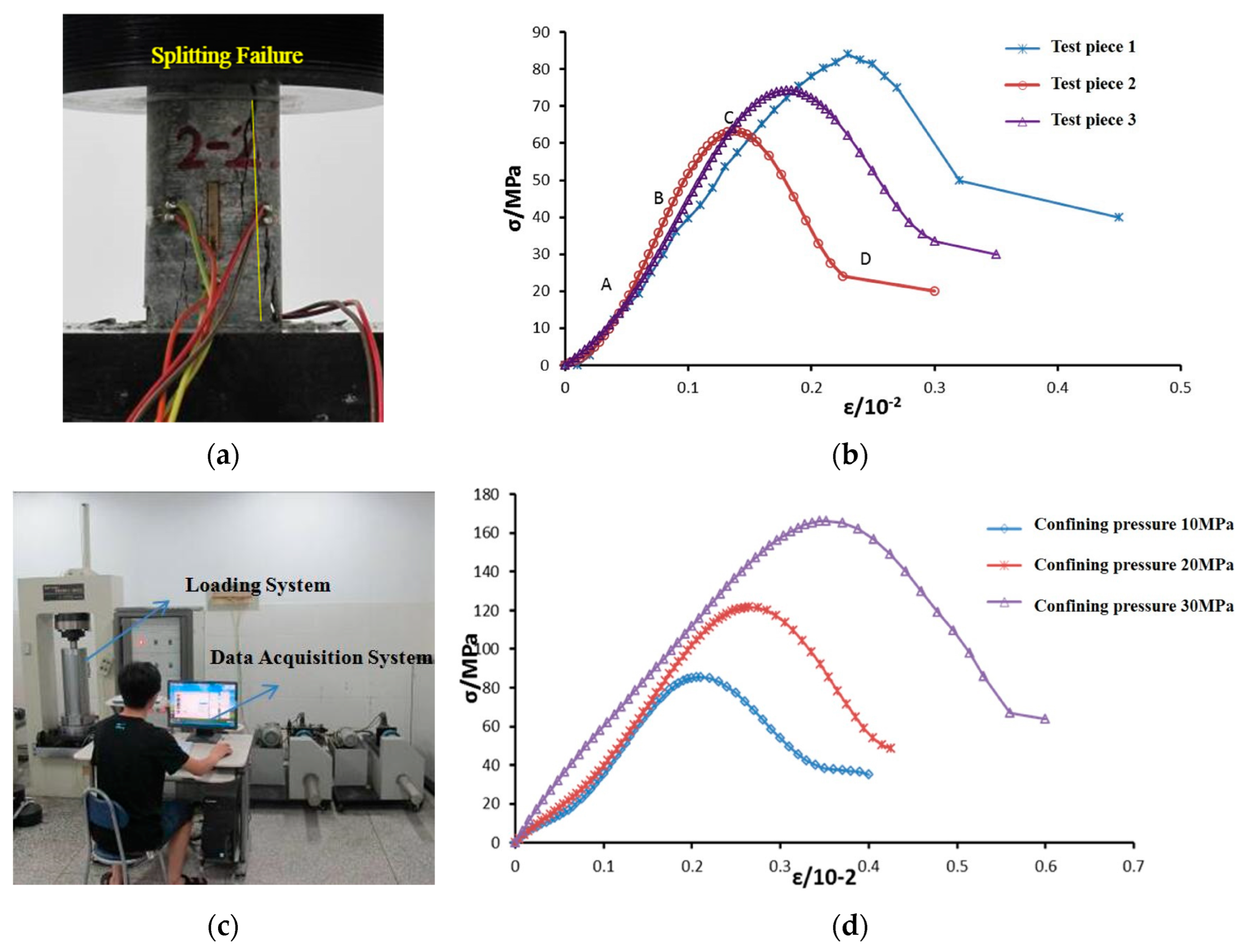
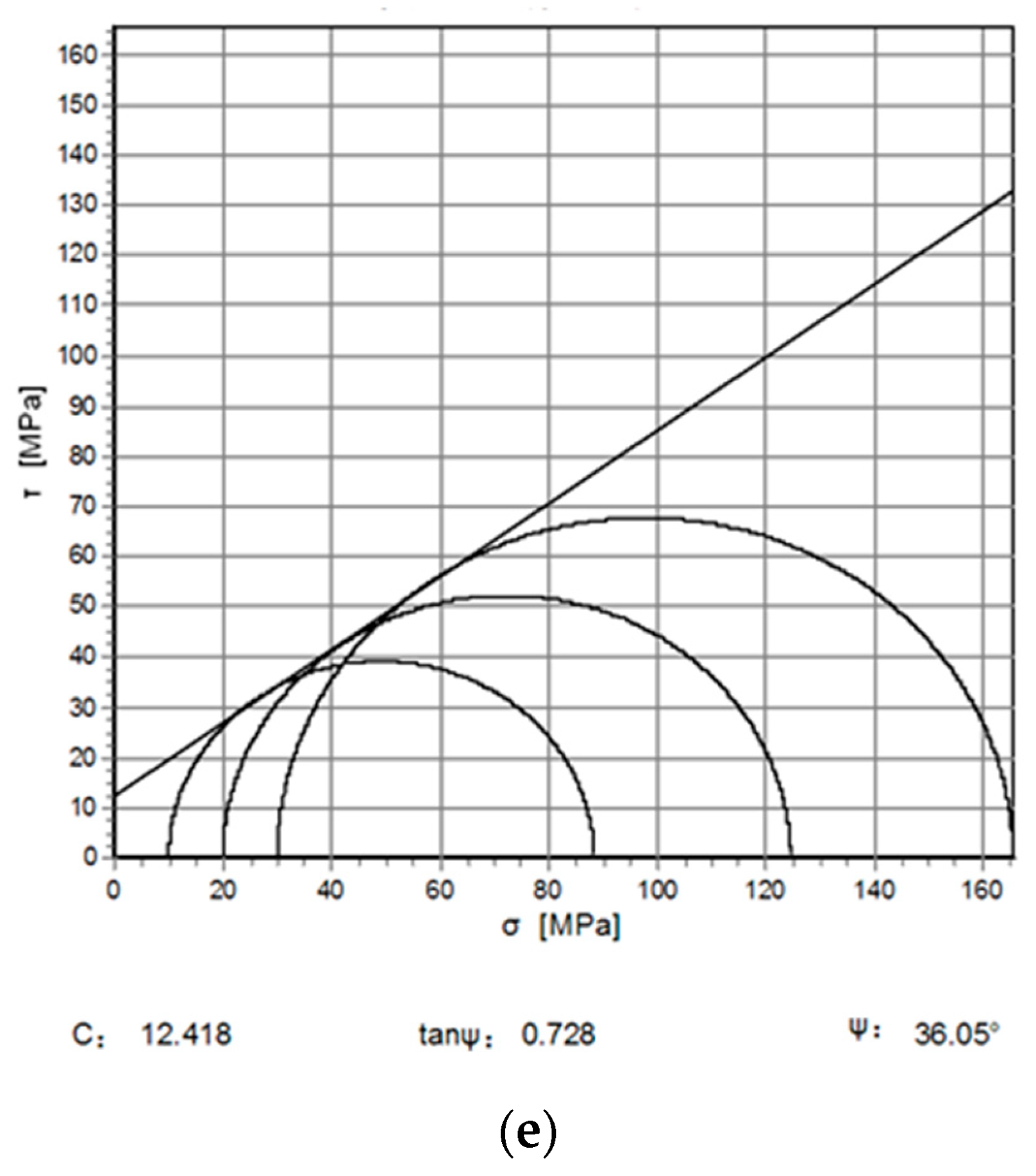
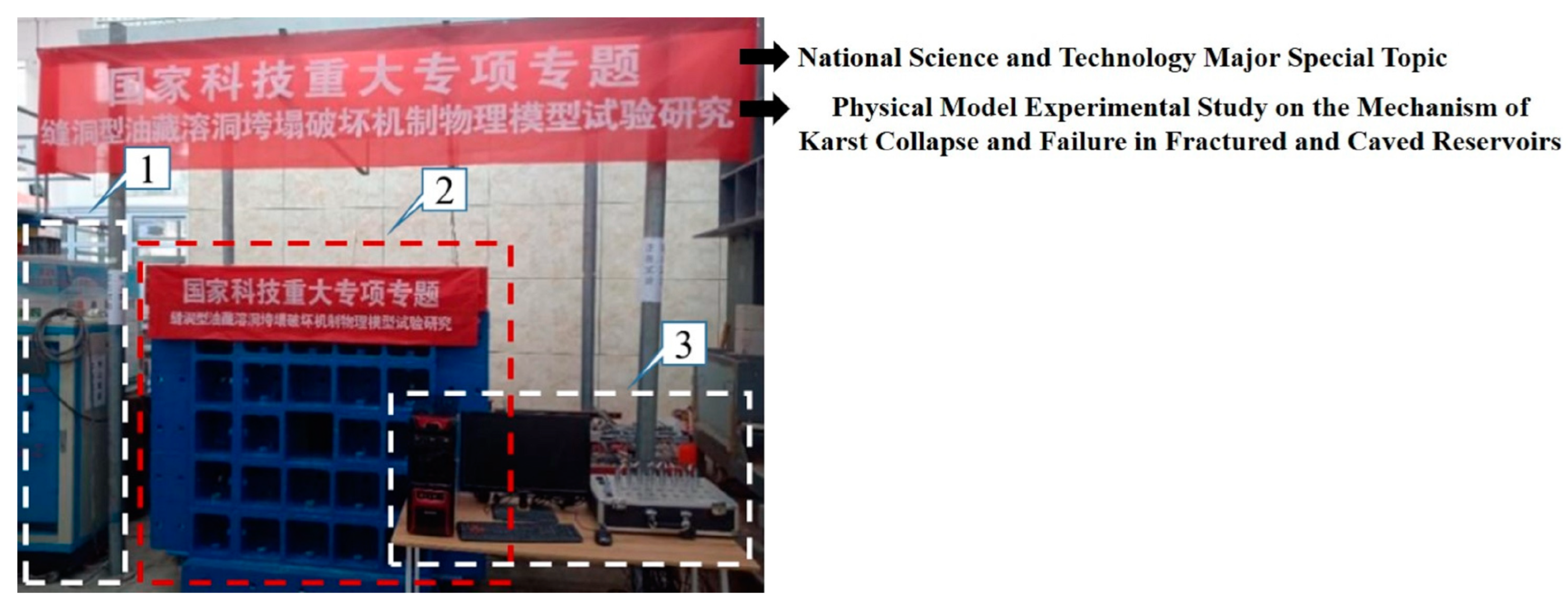
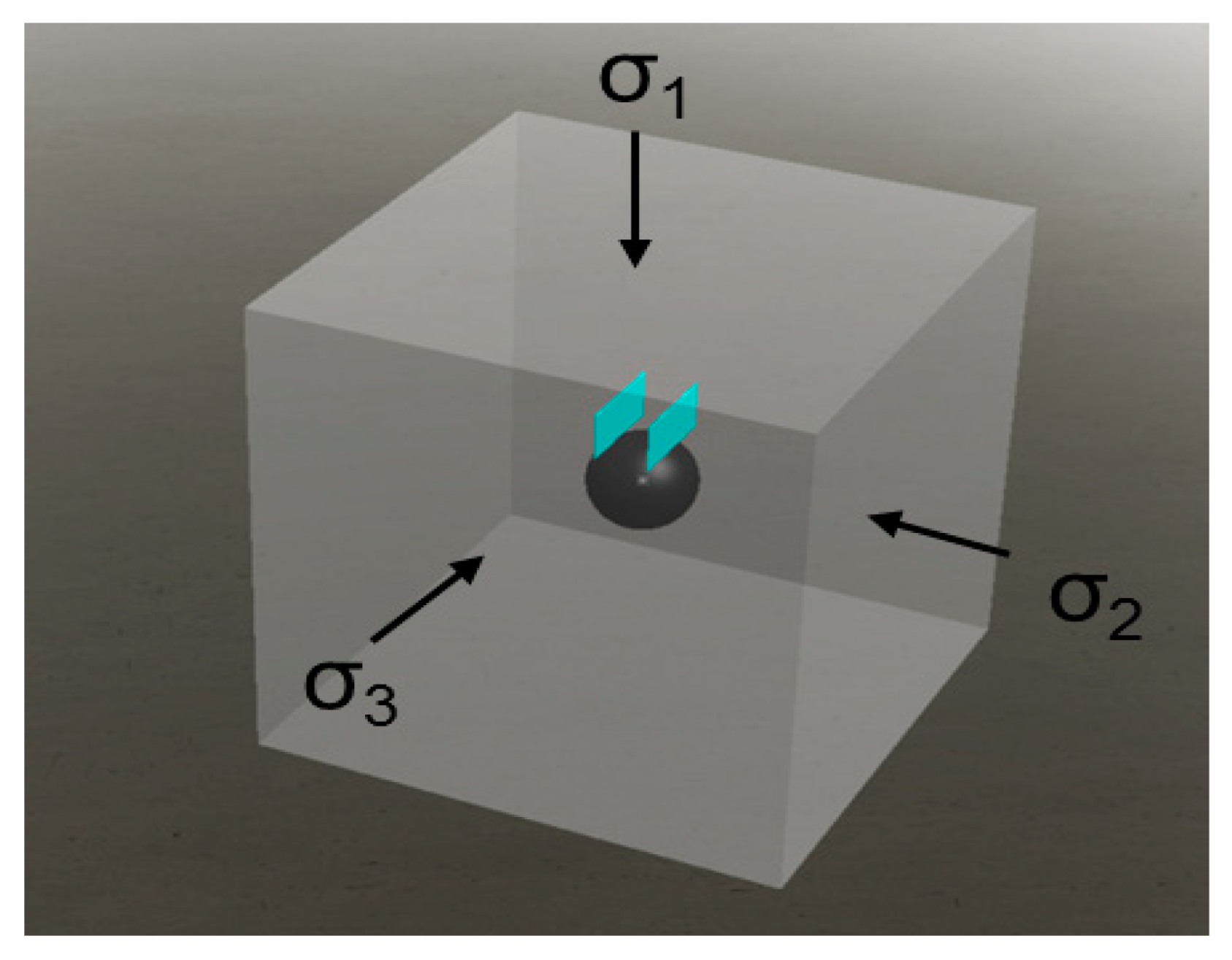
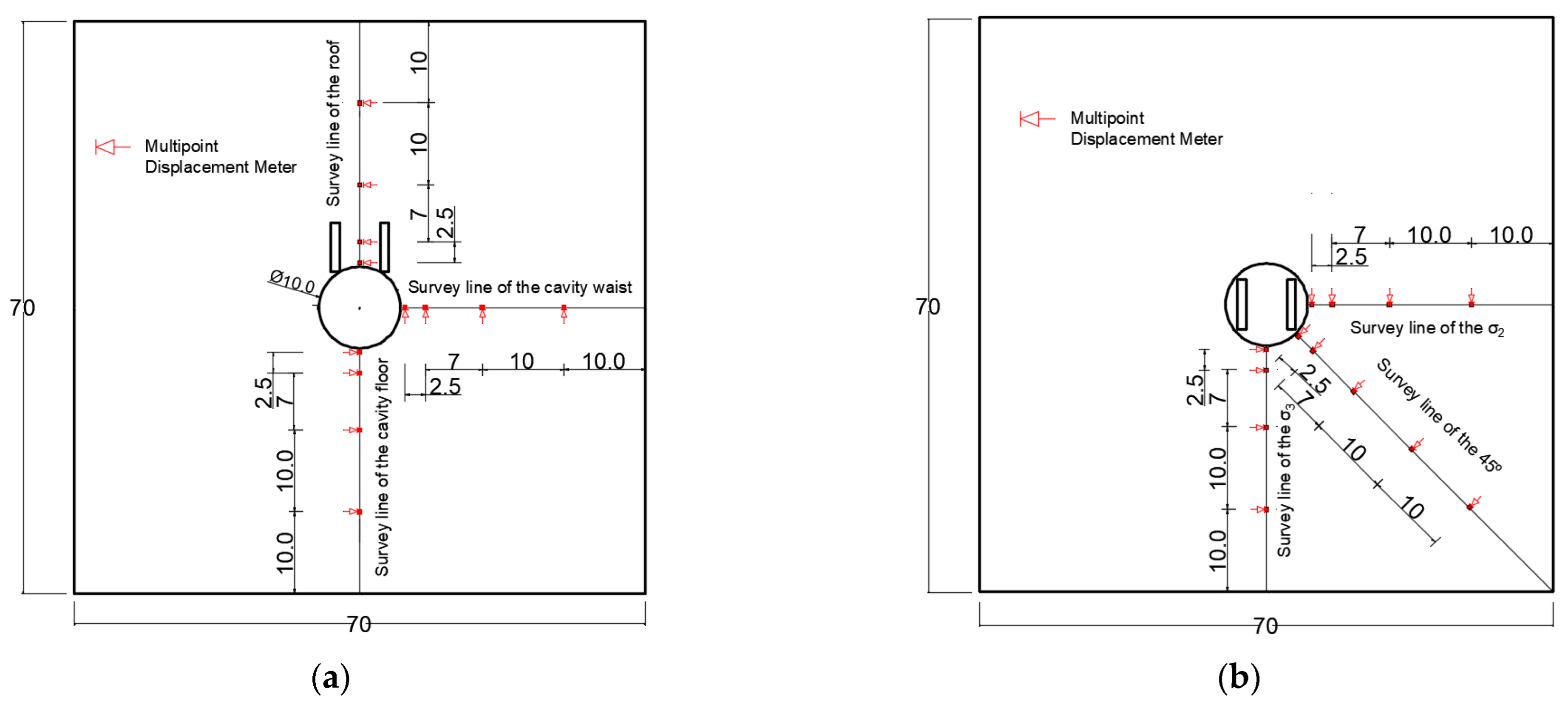

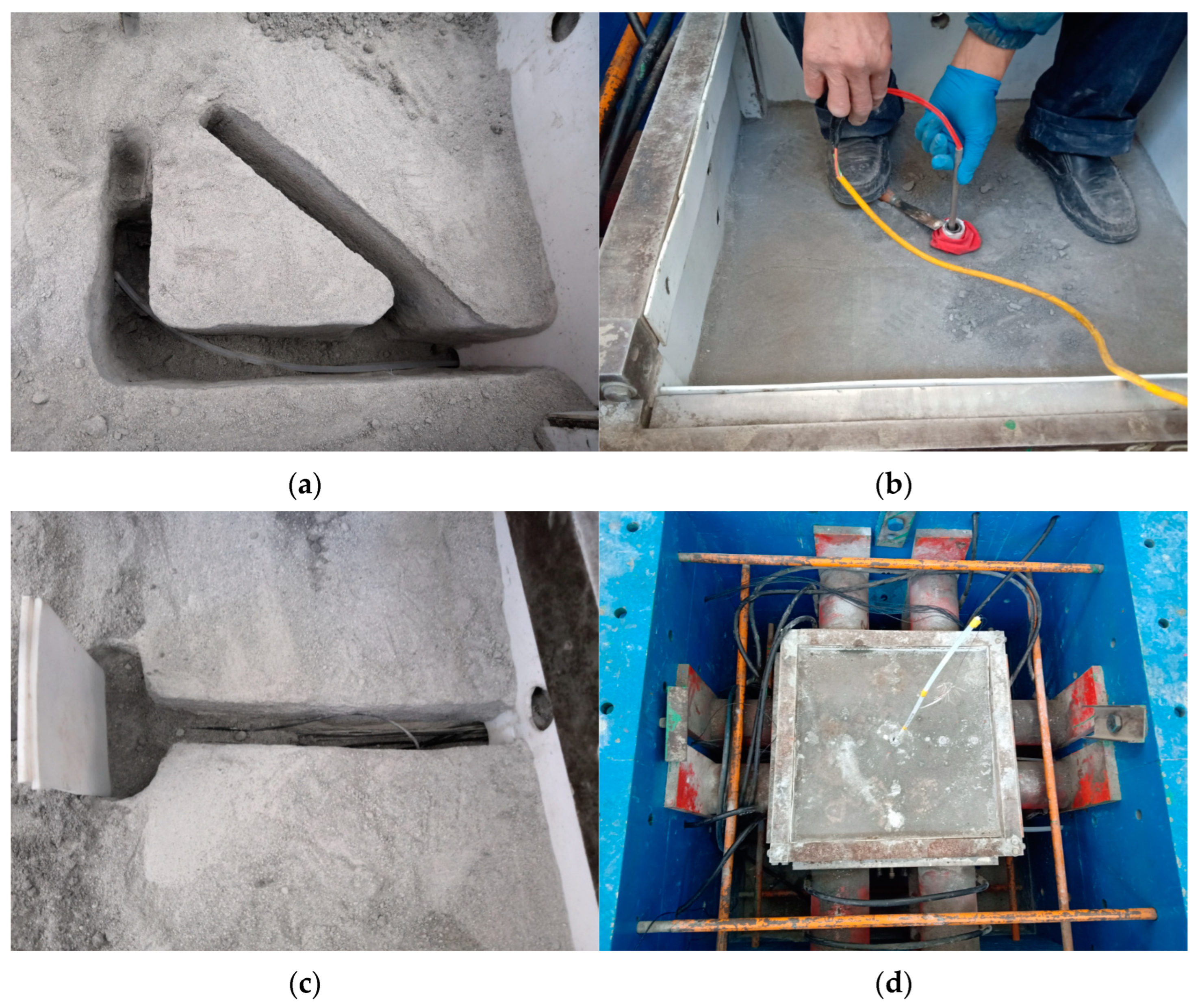

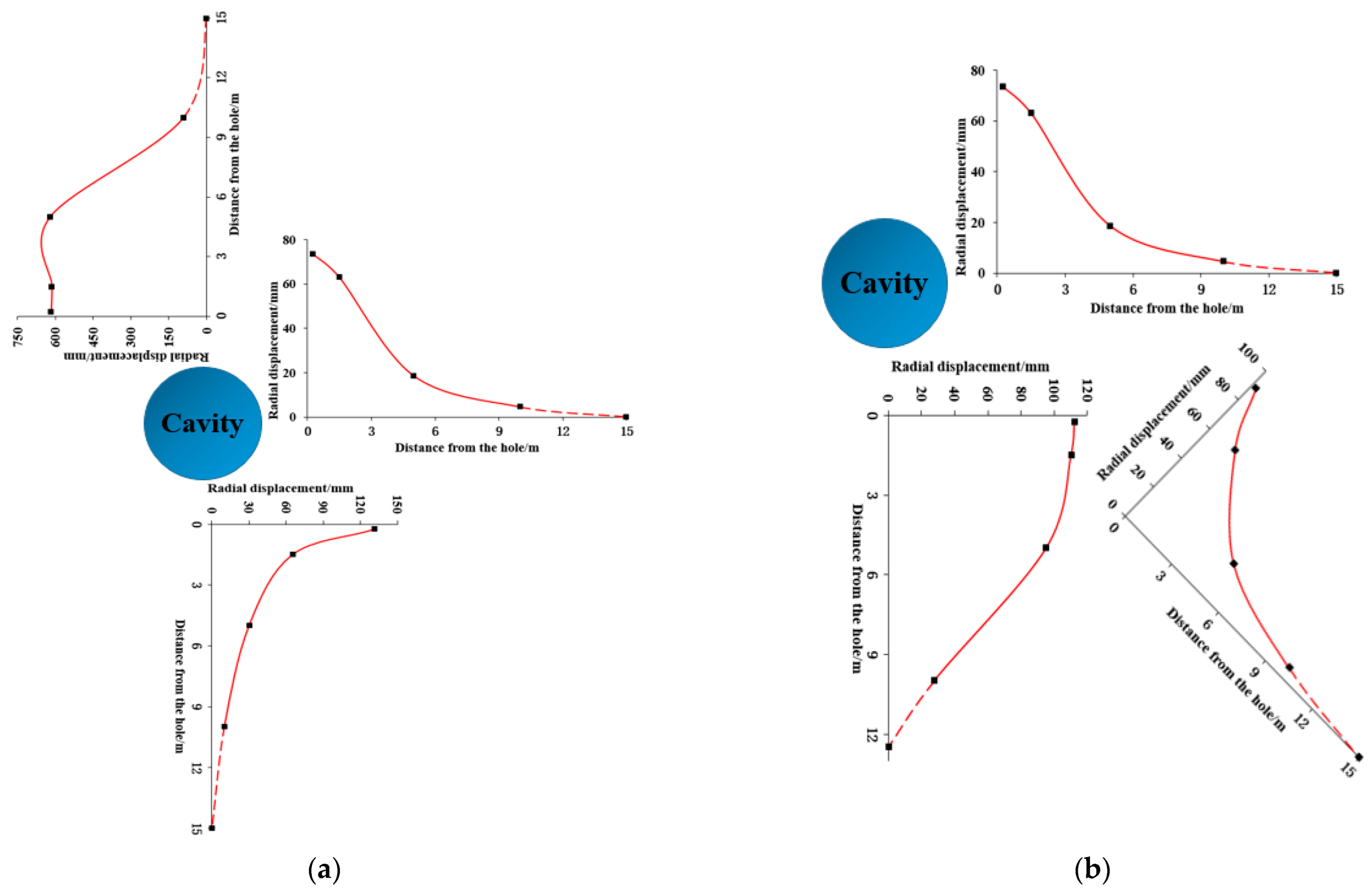
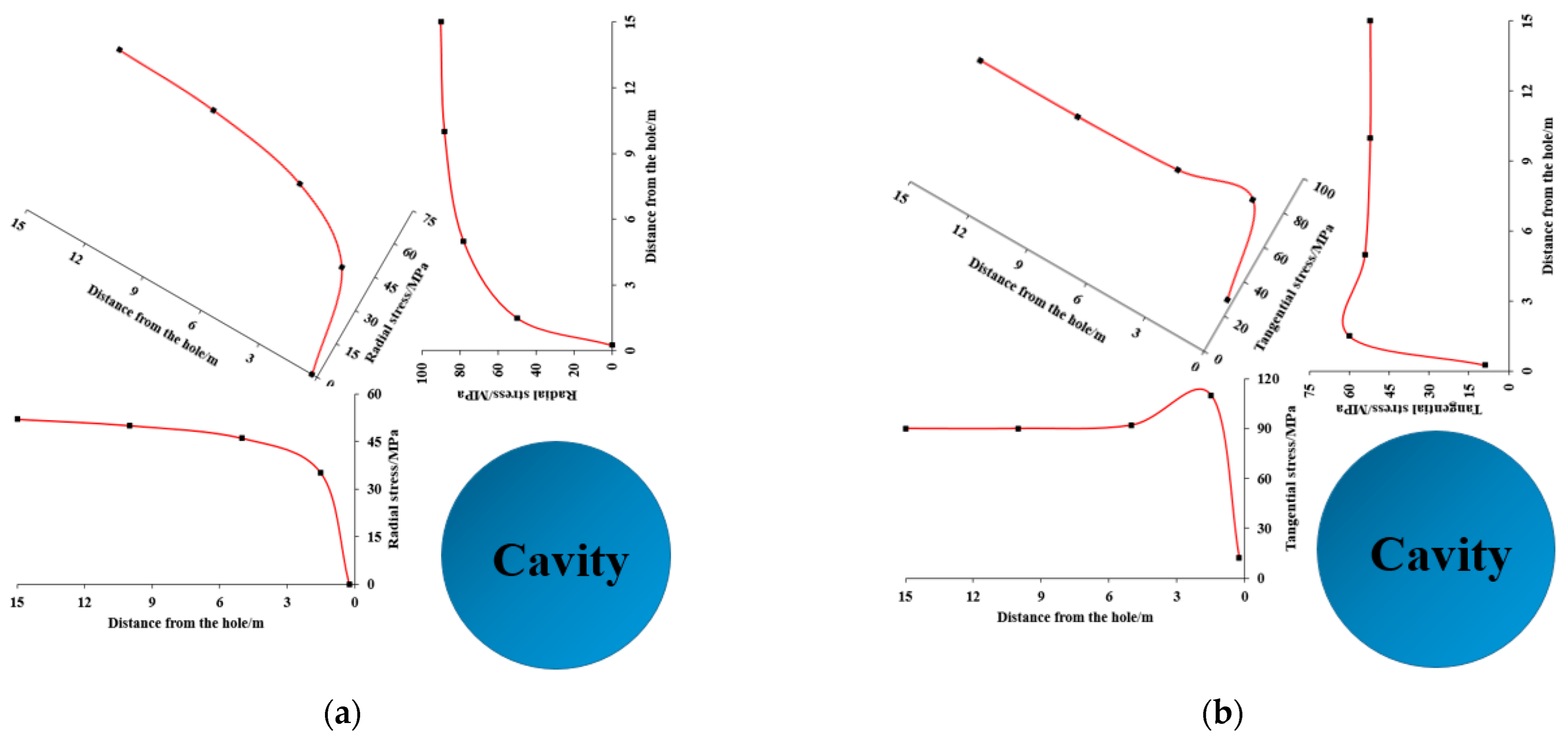
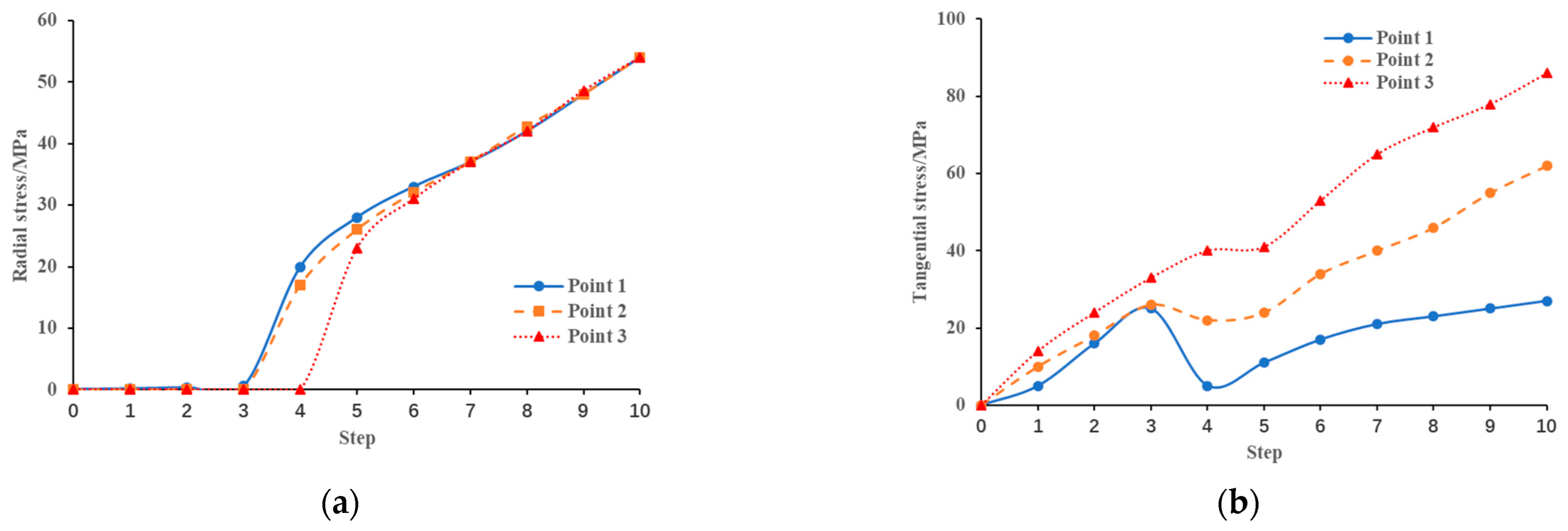


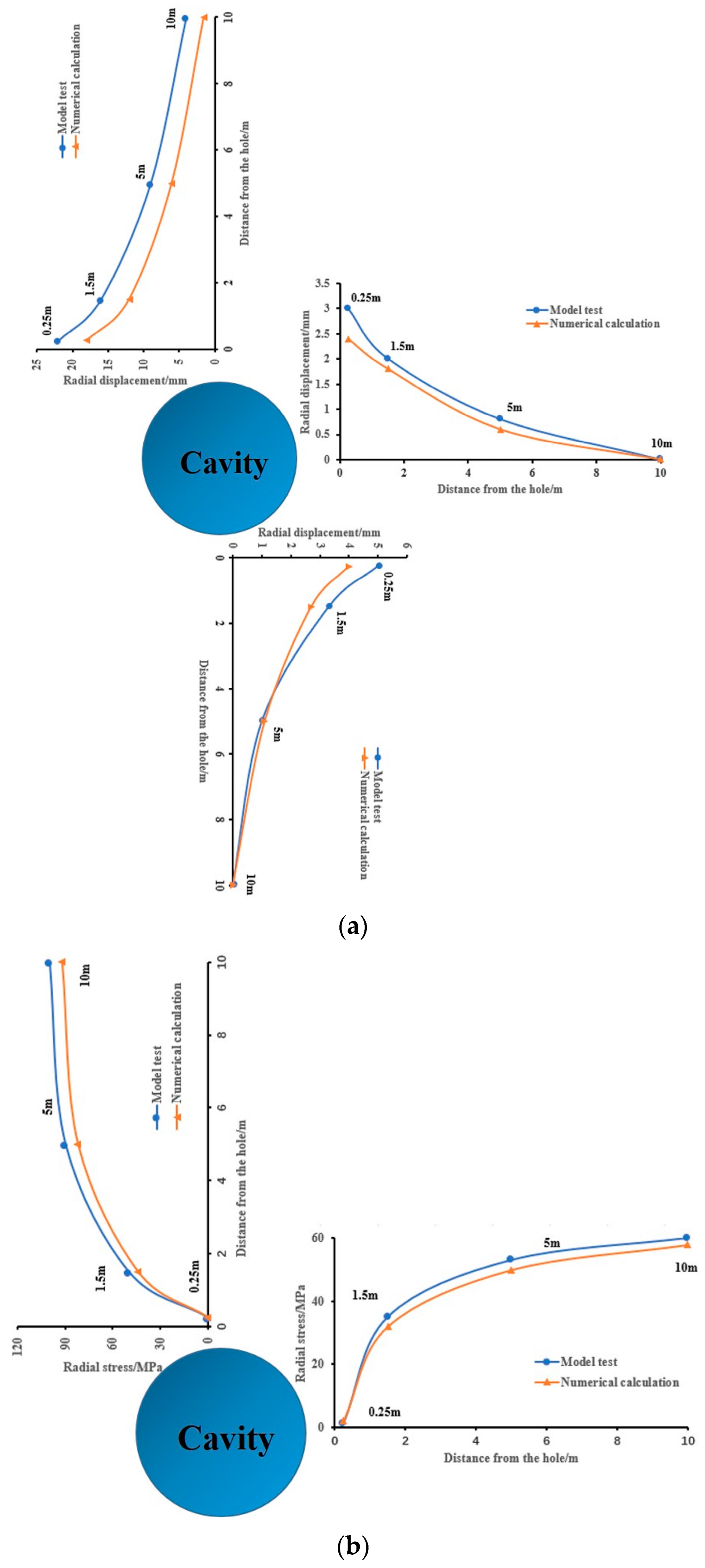
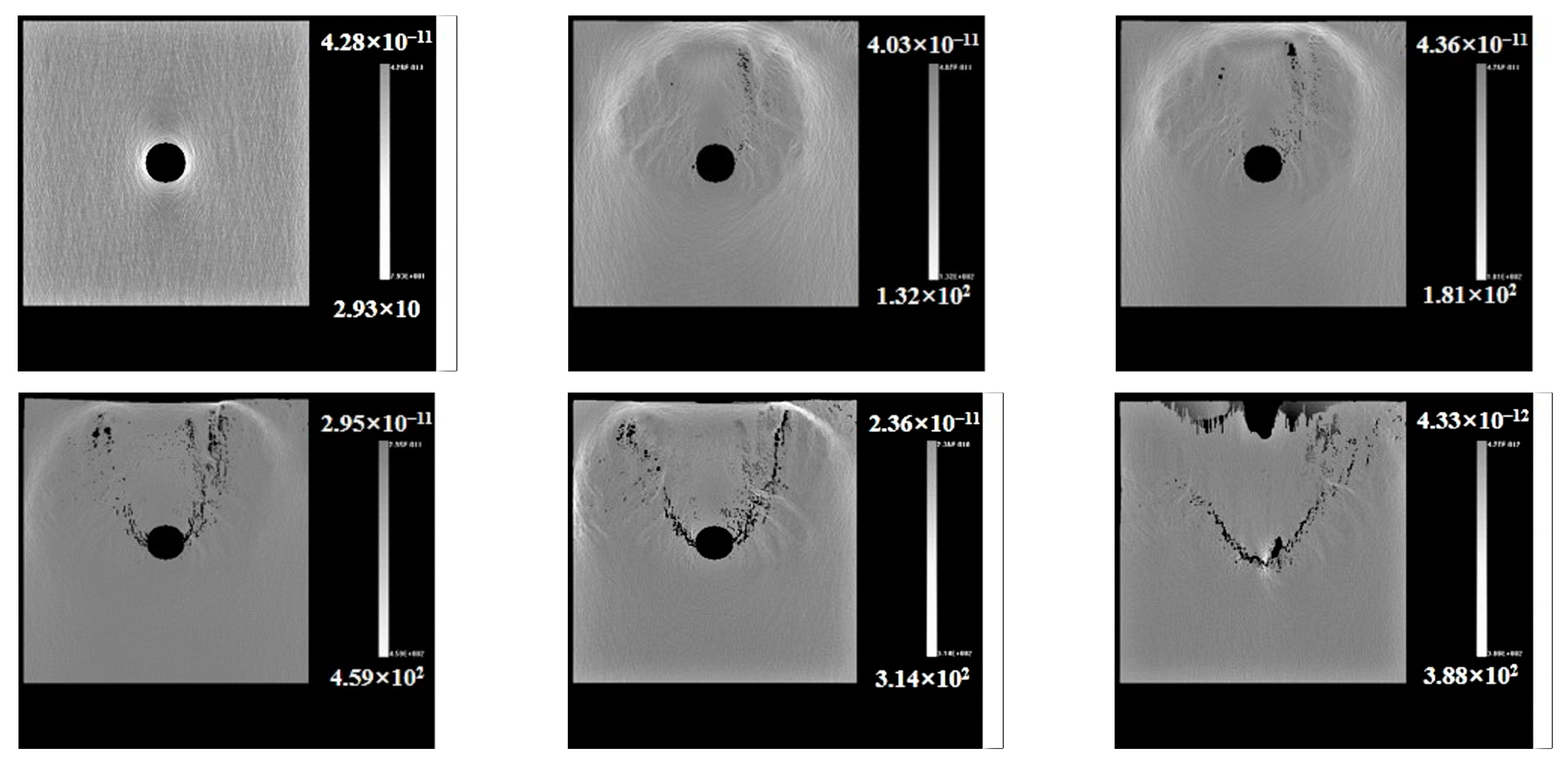
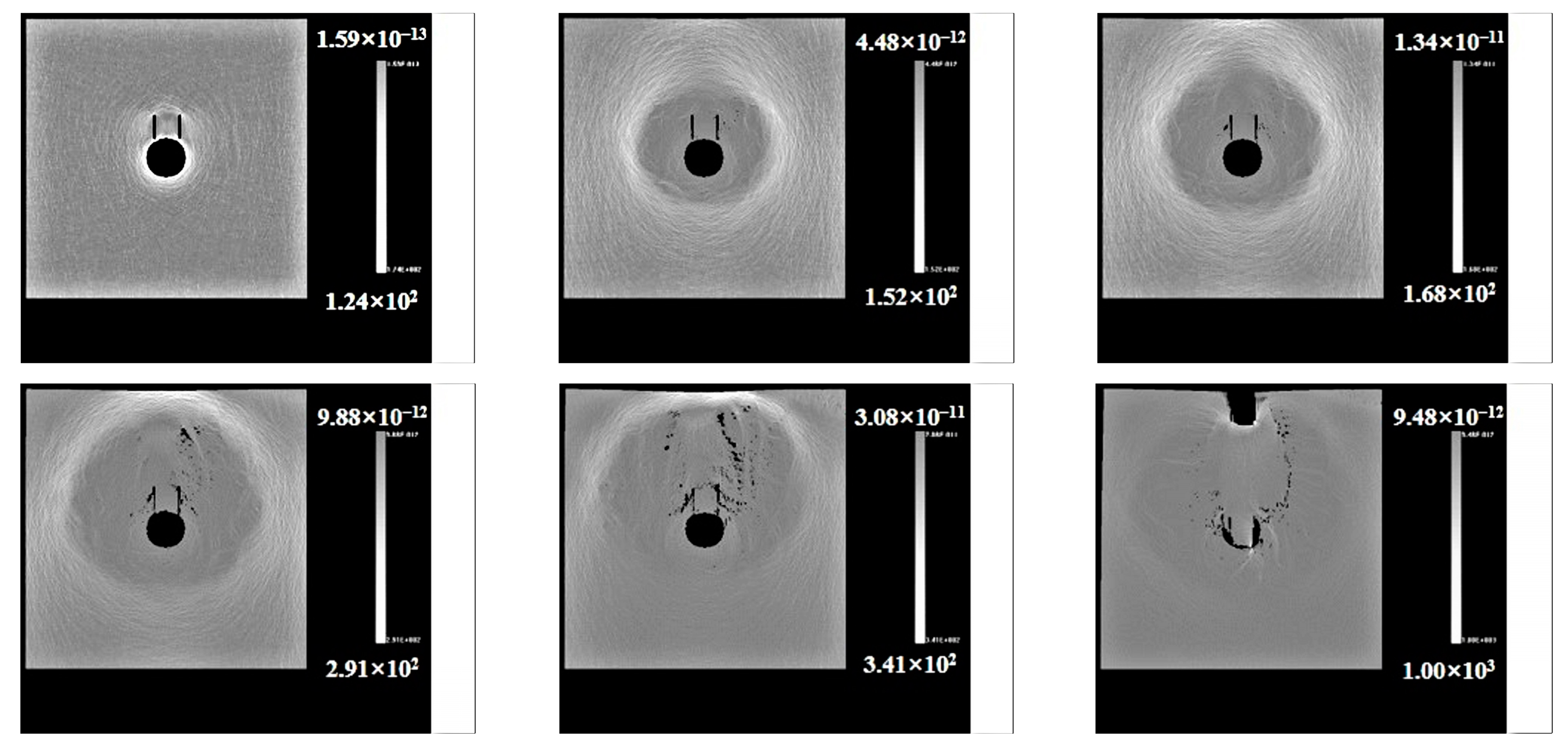
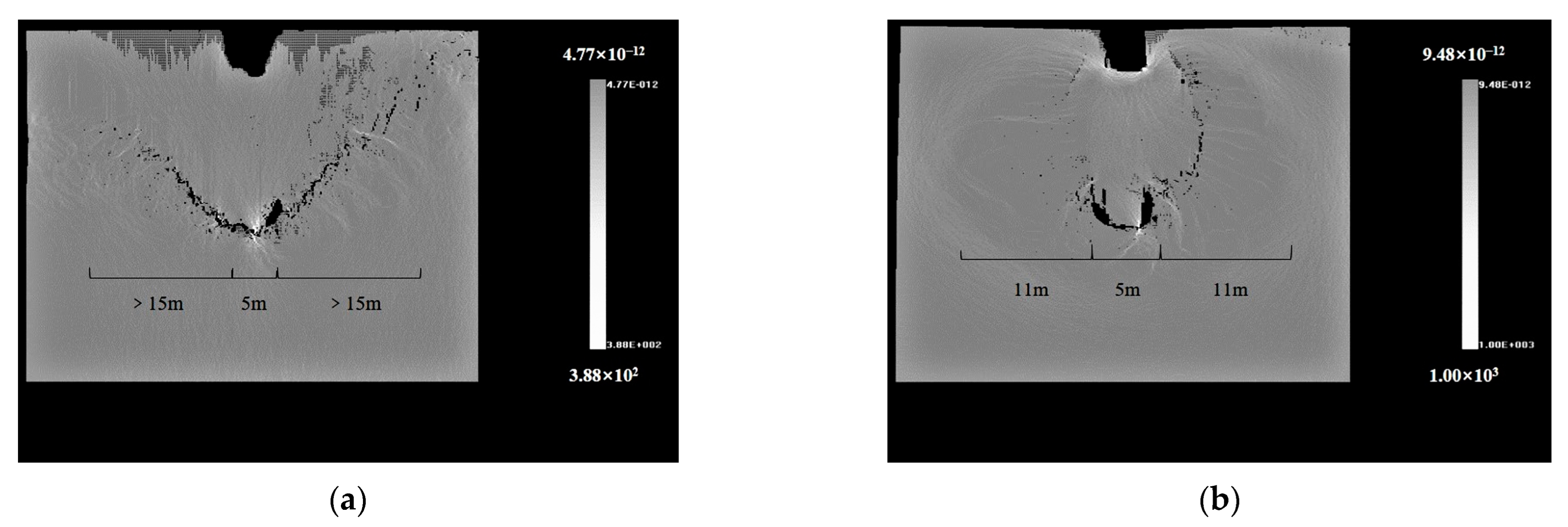
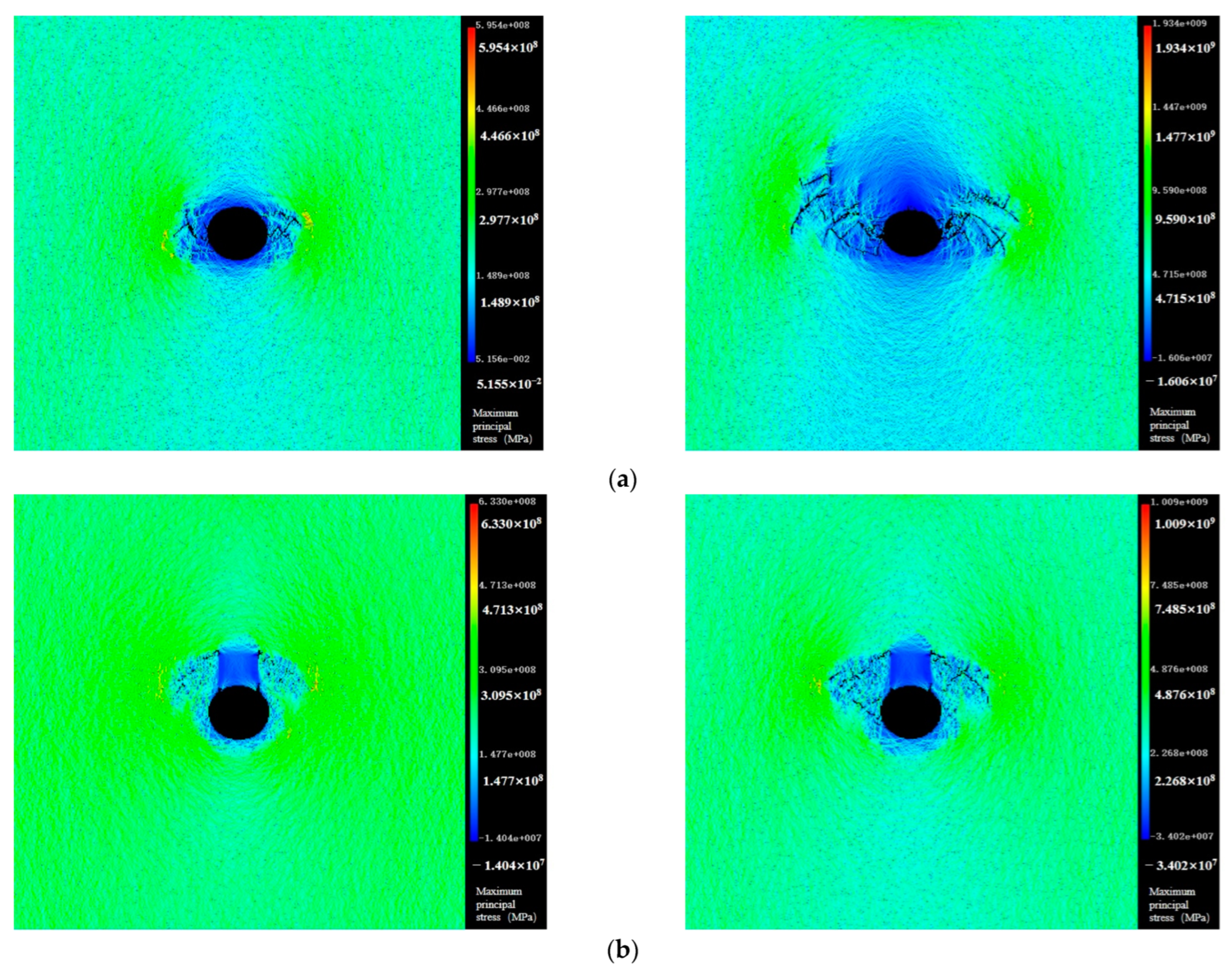
| Material | Bulkdensity (KN/m3) | Elastic Modulus (GPa) | Compressive Strength (MPa) | Tensile Strength (MPa) | Cohesion (MPa) | Internal Friction Angle (°) | Poisson’s Ratio |
|---|---|---|---|---|---|---|---|
| Carbonate | 27 | 36 | 74 | 3.8 | 12 | 36 | 0.25 |
| Similar Material | Bulkdensity (KN/m3) | Elastic Modulus (GPa) | Compressive Strength (MPa) | Tensile Strength (MPa) | Cohesion (MPa) | Internal Friction Angle (°) | Poisson’s Ratio |
|---|---|---|---|---|---|---|---|
| Carbonate | 26.8~27.1 | 710~820 | 1.38~1.61 | 0.71~0.82 | 0.23~0.26 | 35.4~36.5 | 0.23~0.26 |
| Loading Steps | 1 | 2 | 3 | 4 | 5 | 6 | 7 | 8 | 9 | 10 |
|---|---|---|---|---|---|---|---|---|---|---|
| σ1/MPa | 15 | 30 | 45 | 60 | 75 | 90 | 105 | 120 | 135 | 150 |
| σ2/MPa | 5.4 | 10.8 | 16.2 | 21.6 | 27 | 32.4 | 37.8 | 43.2 | 48.6 | 54 |
| σ3/MPa | 9 | 18 | 27 | 36 | 45 | 54 | 63 | 72 | 81 | 90 |
Disclaimer/Publisher’s Note: The statements, opinions and data contained in all publications are solely those of the individual author(s) and contributor(s) and not of MDPI and/or the editor(s). MDPI and/or the editor(s) disclaim responsibility for any injury to people or property resulting from any ideas, methods, instructions or products referred to in the content. |
© 2023 by the authors. Licensee MDPI, Basel, Switzerland. This article is an open access article distributed under the terms and conditions of the Creative Commons Attribution (CC BY) license (https://creativecommons.org/licenses/by/4.0/).
Share and Cite
Ding, Y.; Zhang, Q.; Xiang, W.; Wang, B.; Lyu, X.; Zhang, L. Stability Analysis of Cavern Collapse in Fractured-Cavity Oil Reservoirs. Sustainability 2023, 15, 6809. https://doi.org/10.3390/su15086809
Ding Y, Zhang Q, Xiang W, Wang B, Lyu X, Zhang L. Stability Analysis of Cavern Collapse in Fractured-Cavity Oil Reservoirs. Sustainability. 2023; 15(8):6809. https://doi.org/10.3390/su15086809
Chicago/Turabian StyleDing, Yanzhi, Qiangyong Zhang, Wen Xiang, Bin Wang, Xinrui Lyu, and Longyun Zhang. 2023. "Stability Analysis of Cavern Collapse in Fractured-Cavity Oil Reservoirs" Sustainability 15, no. 8: 6809. https://doi.org/10.3390/su15086809
APA StyleDing, Y., Zhang, Q., Xiang, W., Wang, B., Lyu, X., & Zhang, L. (2023). Stability Analysis of Cavern Collapse in Fractured-Cavity Oil Reservoirs. Sustainability, 15(8), 6809. https://doi.org/10.3390/su15086809





